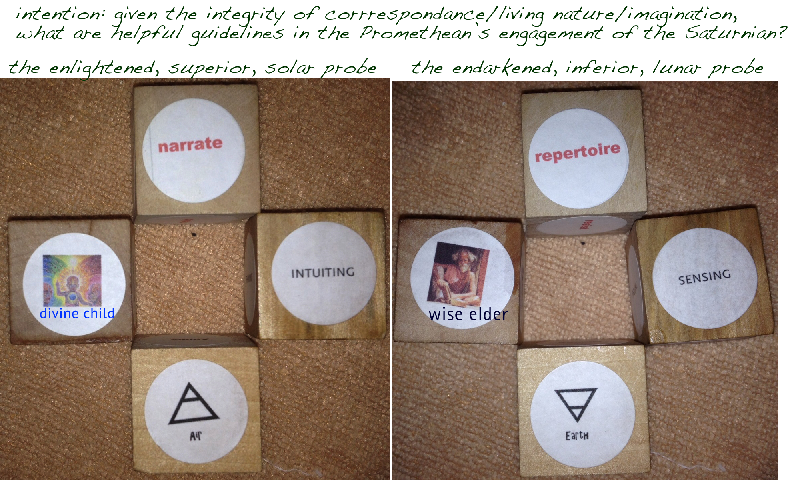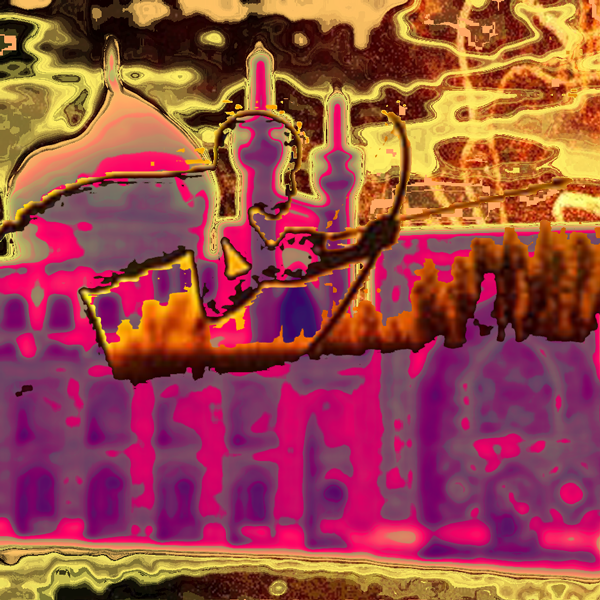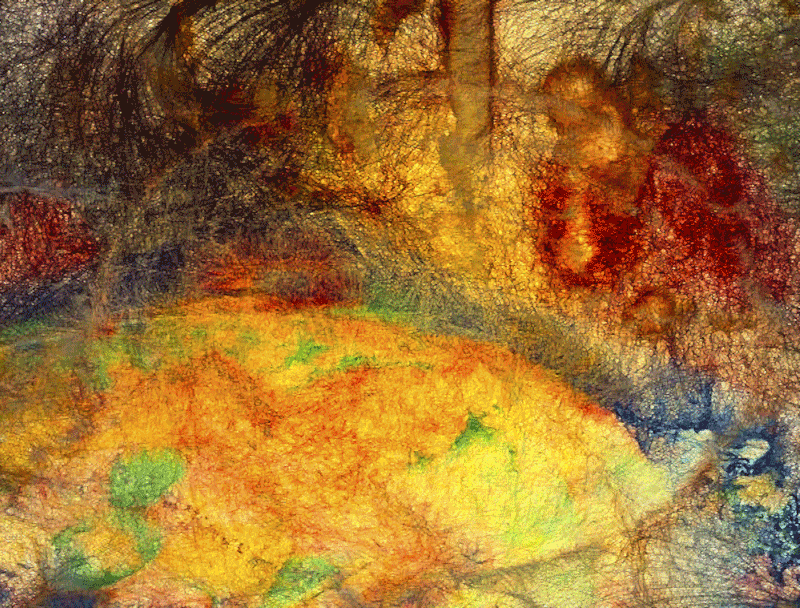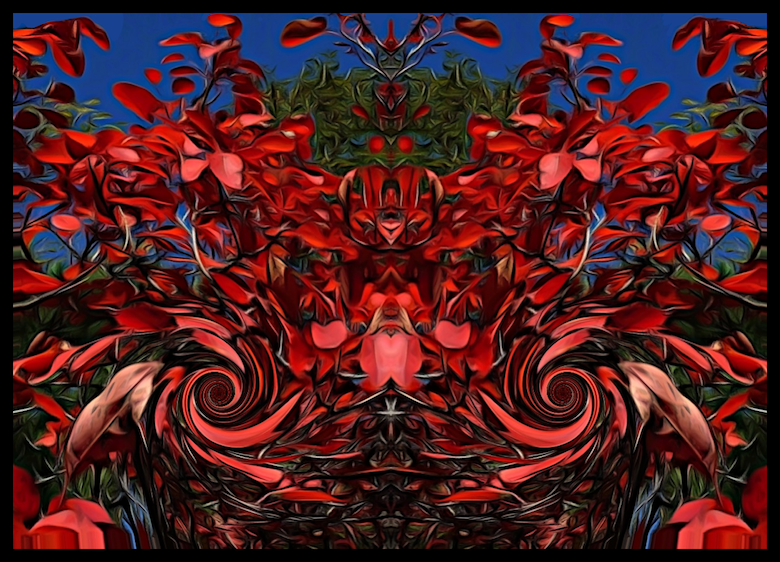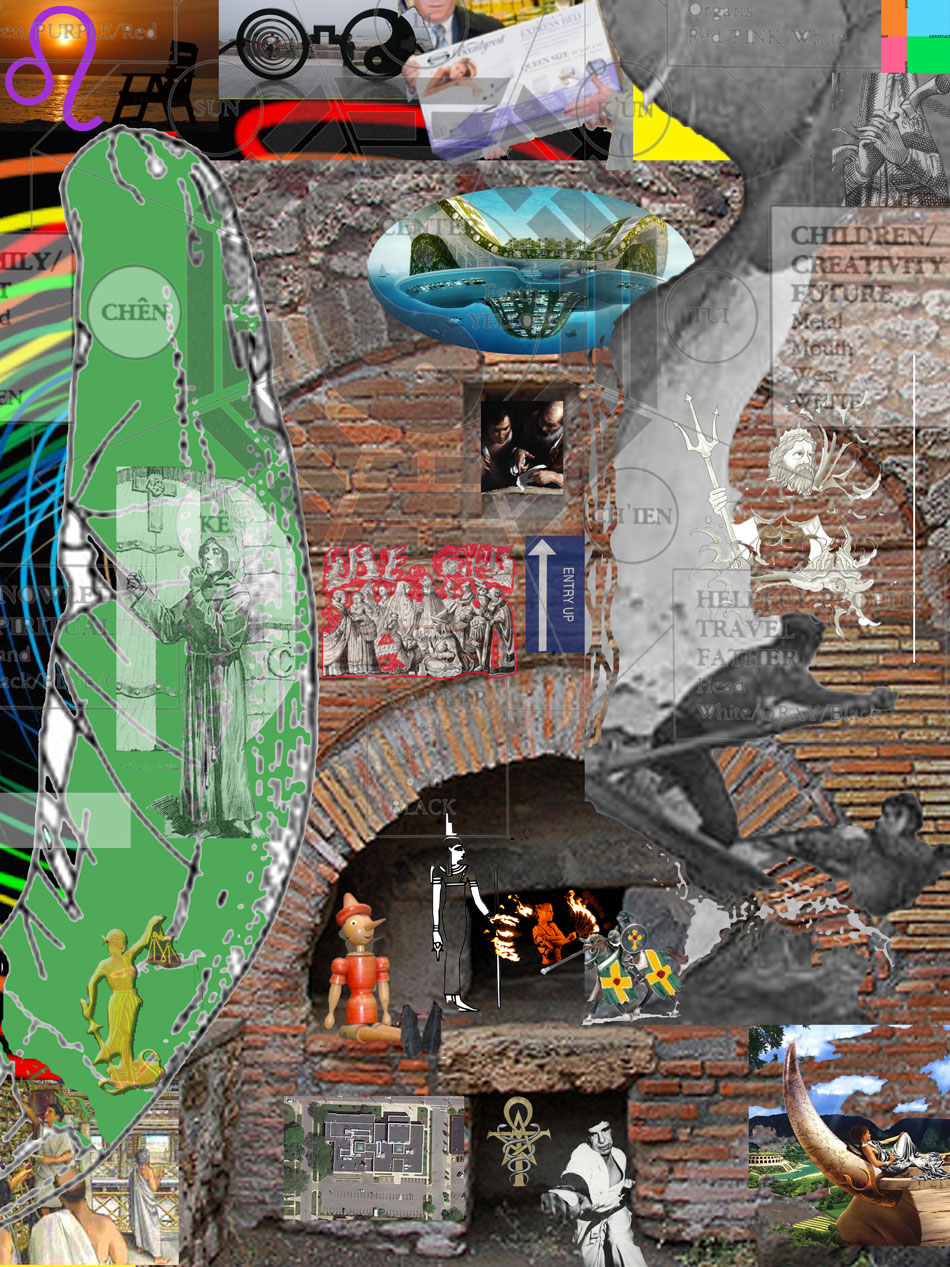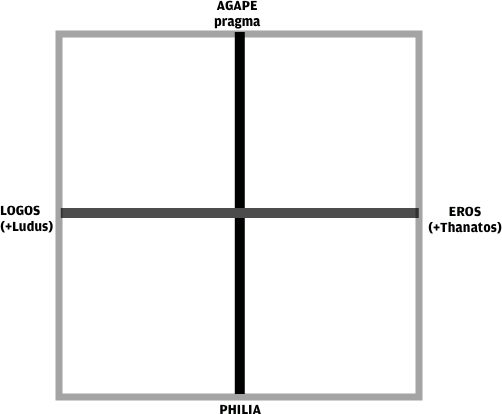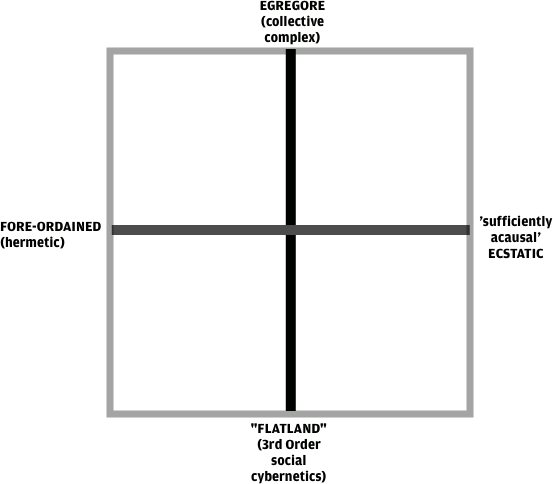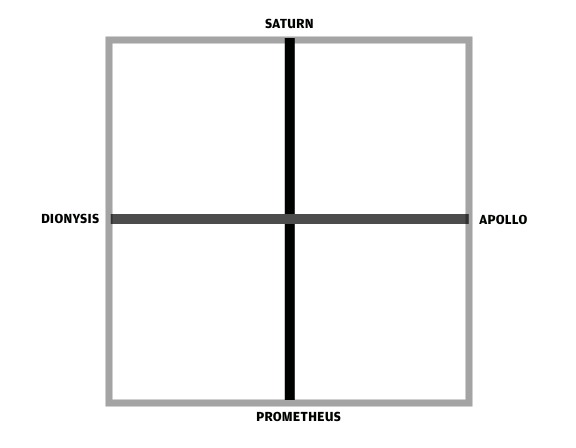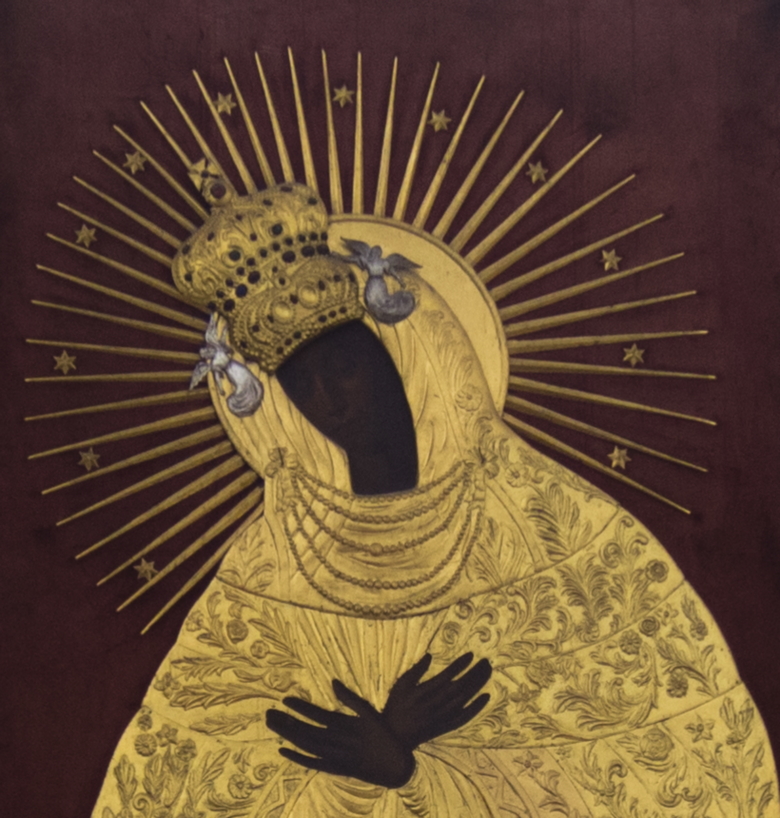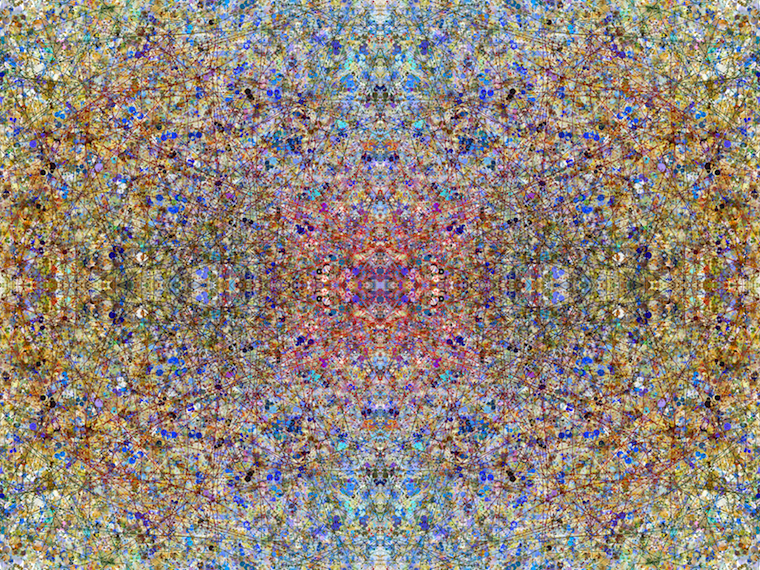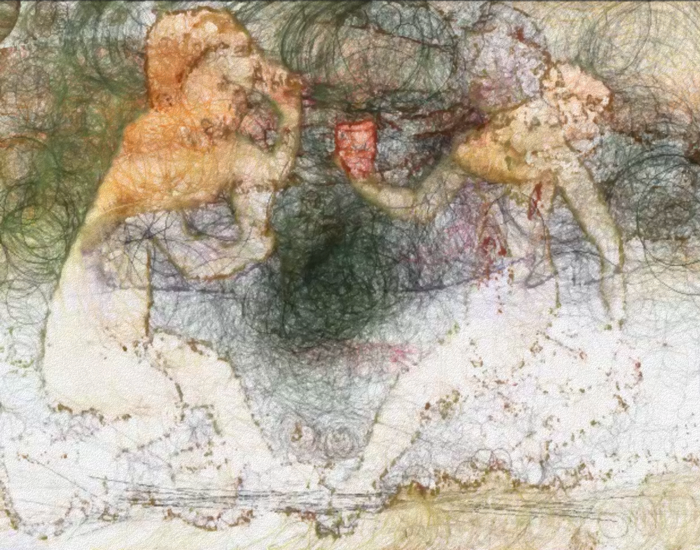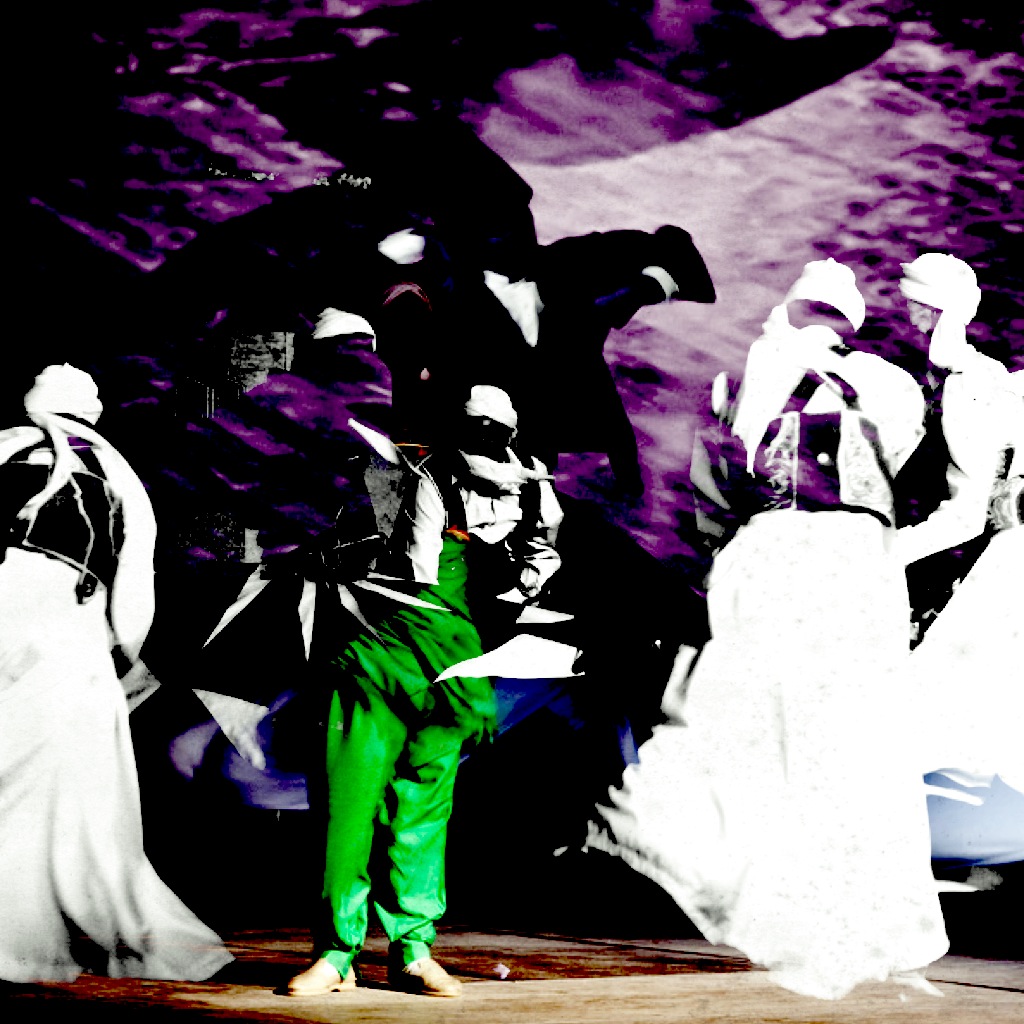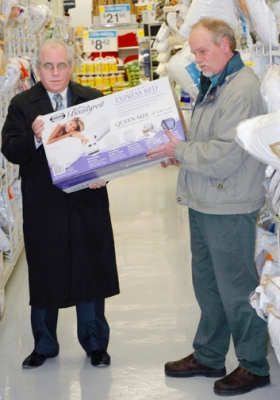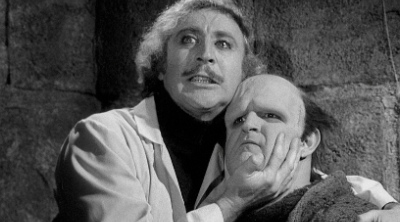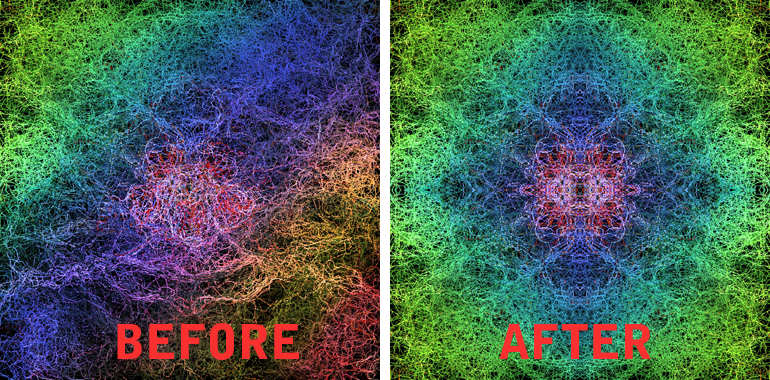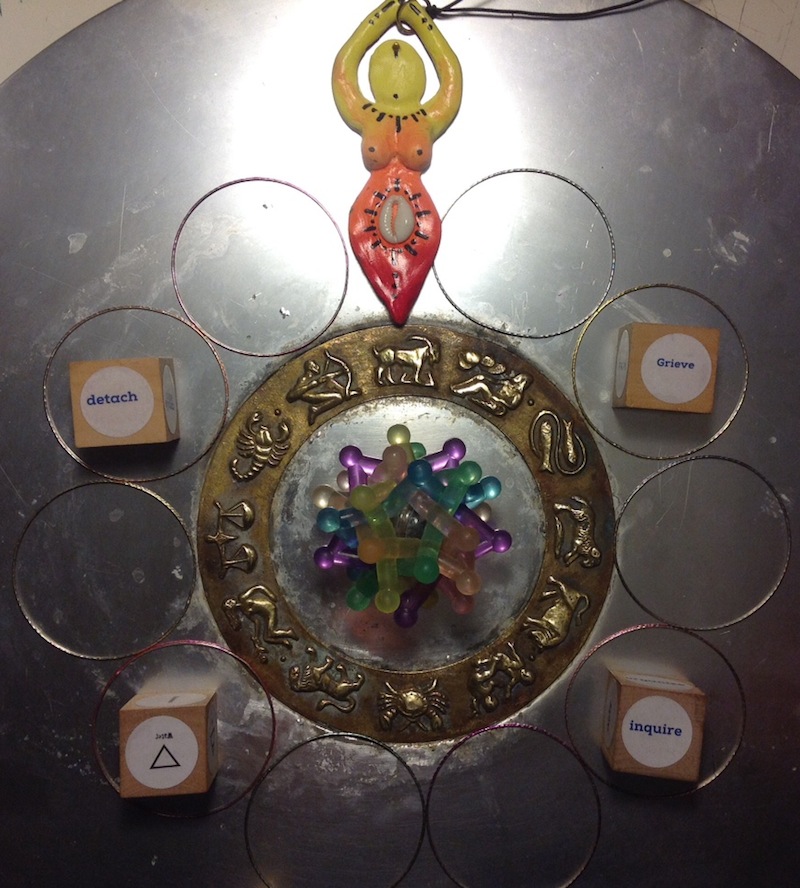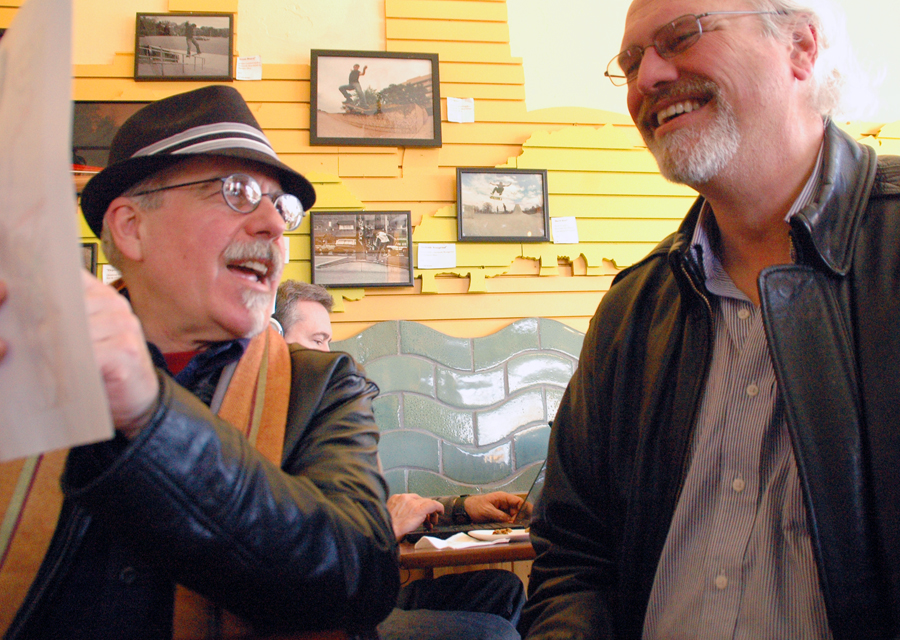
“Here Kenneth Warren, with Tom Shaughnessy, Steve Davis and myself look at one of Ken’s diagrams as we discuss how Lakewood fits, and where the city’s various personalities and programs fall.” (The diagram was an archetypal collage created by me and sent to Ken to execute an “op” and improvised learning device.) -Lakewood Observer photo-
The following series of posts were developed and published in the aftermath of the passing of my friend, colleague, business partner, and brother-in-learning, Ken Warren, on May 21, 2015.
My aim was to capture in the liminal space given by my grief and my inspiration a reflective, and personal account of the merit of male friendship. And, given the clear ‘particularity’ of my adventure undertaken with Ken, the mode of expression in this series is phenomenological and personal.
Over time I will come back to my writing here to make it easier to read. I do not have any interest in making it easier to grasp. Grasp what you are able to hold and receive.
I.
He can celebrate his very real strengths–for instance, strong religious feeling, or a great capacity for friendship, whch often, according to Jung, “creates astonishing tenderness between men and may even rescue friendship between the sexes from the limbo of the impossible.” Marion Woodman, The Pregnant Virgin (pg.157)
Love came and said
that I should only be with it,
that I should avoid being sensible, steady, intellectual.
So love and I kept visiting,
back and forth, until now,
I did not go home.
I live here now, inside
this new annihilation.
version of Rumi by Coleman Barks, from Soul Fury, Rumi and Shams Tabriz and Friendship
II.
(My aim is to write a bit about my friendship with Ken Warren, and these thoughts are additionally targeted to capture some resonant musings about the nature of friends, friendship, and, other related topics.)
My close friend from Vermont, Bob Buckeye, told me during a phone call in 1992, ‘Since you’re stuck in Cleveland for the moment you should look up Ken Warren, the director of the Lakewood Public Library.’
(Bob Buckeye was from Lakewood and, in fact, had been a football star at Lakewood High School in the late fifties. I met him after moving to Middlebury in 1976. He was the Abernathy Special Collections librarian at Middlebury College. Yet his connection with Ken was mostly established by both men being in the community of scholars and poets and publishers gathered around: the projective verse of poet Charles Olson, the Black Mountain ideal, Gloucester poetics, and the post-romantic sweep of New England literary experiments, pragmatics, and a distinctive American mythopoetics.)
A Heart of the Matter
I first walked into the Lakewood Public Library sometime in 1993. My twin brother, Timothy, a poet, had ended his own life in early March. At the time, I was helping manage a coffee house, and I warded off my depression by spending almost all my free time in the many libraries in northeastern Ohio.
As a library rat, I would evaluate a library’s usefulness as a matter of closely checking out its collection of music, philosophy, psychology, religion, science, history, biography, and, then go further by also checking out whether anthropology and sociology had been given a coherent location. One acid test I used was to learn if the local cataloging was enslaved by the Library of Congress’s sometimes mistaken descriptions captured in their controlling master record.
Lakewood Public Library was the most intoxicating library I ever walked into. Its collection was full of unusual volumes. I spoke to Bob Buckeye about this and he simply told me, “It is Ken’s collection.”
I did not meet Ken until the fall of 2004. I do not know why I didn’t look him up. Actually, it would have been commonsense at anytime between 2000-2004 to send him a letter and a resume. I did not do so.
Bob Buckeye called me up in 2004 and asked me if I would like to come over to Lakewood and have drinks with Ken and him. We had drinks at an Irish pub a block away from the library. As we walked toward it, Bob told me ‘Ken really knows his Jung.’
I leaned toward Ken, and told him, “Know me as Jamesian.”
I have during the course of my life twice spontaneously engaged a stranger in what Star Trek describes to be a mind meld. This was one of those times. Ken and I basically shut Bob out as we discovered our shared affinity for the Analytical Psychology, and, the phenomenological turn in anthropology. We were mutually engrossed.
Plus, there was at Ken’s hand a practical opportunity; and so he explained to us his vision for his library playing a much more intentional and active role in supporting what he called new transmissions for the sake of enriching civic experience. He termed this the Visionary Alignment.
At the time, Judith Buerkel, my original partner in squareONE: experiential toolmakers, was in the last phase of her terminal illness. We had closed down our working partnership in 1999. Nevertheless, I had maintained the squareONE web site. After our initial meeting, and over the next few weeks, Ken began to send me emails about what he was reading on my web site. He may the only person who ever read my entire web site.
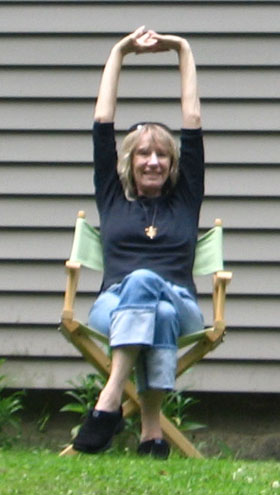
Judith Buerkel (1941-2007), great friend, squareONE partner, diverger “who through stuff from the future back to me the converger in the present”
Our relationship took off over the matter of The Lakewood Observer project, although over the next year or so, I only recall meeting with him one-on-one a handful of times. Yet, we met one on one in an amazingly prolix manner by way of email. Not only were there the copious project emails shared among the small group of advisors, but there were tens of emails sent back and forth between the two of us, for the purpose of sustaining our unique circuit, (his terms.)
(Coincidentally, my scholarly interest in serendipity was inspired by my designing a “Boasian” style survey and training ‘street anthropologists’ to survey the community as it presented itself in its natural flow. The singular question the survey was designed to address was: What brought you to Lakewood? )
In late 2005, Ken hired me to work in the technology department at LPL. He told me to work with my supervisor to use my chops to carry forward (something like) an active anthropological thrust and use it to implicate experience, community, and civic knowledge. (Italics are Ken’s terms.) To this I would fold in action learning. As well, I was given close to free reign to program and present experiential learning in the library and do so under its auspices. He and I both knew we were onto a new vision of experience and the library.
By July, eight months into the best job I ever had, my little engine that could jumped the tracks. I resigned in August. The precipitating drama and aftermath led to a falling out between us. Later, Ken retired from LPL at the end of 2008.
On December 2, 2009, after we had had no contact for a little over three years, I received the following email:
Dr. Puck:
I read your Palin post.
I would suggest the paranoia you notice in Palin and around her is a
pathology of the feeling function, wildly amplified through both her
own extraversion and the media. The coincidentia oppositorum hinges on
her hustle bump feel with the brainy Obama.Love,
Ken
Love is the only word that mattered in this reconnecting email, busted into my in-box from out of nowhere. This email restarted our friendship. It turned out his wanting me to know about an impression of his–evoked by my blog post–was a simple key, and it was a key able to turn the lock and open back the door.
I responded in kind. We dove back into each other. In this final phase of our friendship, it soon became exponentially expanded by our mutual willingness to sustain and deepen it based in the most essential simple glorious fact of our communion, that the high communion worth being drawn through, and becoming devoted to, is the one founded in love.
Ken and I never explicitly noted this core basis for our befriending togetherness beyond simple shared affirmations and confirmations. Yet, it was the prime script. The closest we ever came to acknowledging it by way of discussing it took place early on in the first year after we had met one another, when we discussed the flux of narcissistic aspiration, woundedness, healing grace, love, and, love as action, while we worked over a book we both had read, Transformations of Narcissism in Self-Realization by A. H. Almaas.
In early 2010, we forgave each other without reanalyzing and endorsing any narrative about the messy events of the summer of 2006. We knew without speaking of it about the reparative function of our communion.
All the sundry details of our Emersonian dialogs are absolutely secondary to the fact of our befriending communion. We both happen to base our relations in love. What followed was merely the dance set in motion as the response to our reed song.
A thin, bright
reed song.If it fades,
we fade.Coleman Barks, version of Rumi
We both were anchored to this essential beingdoing. And, as it was with Ken, and as it remains with me, this is the foundational rock of our relationships. and of our relating. In Ken’s case, this feeling he freely gave informed tens of relationships.
This love basis is mediated by its contexts, duties, unknowns, and its aspects which are shadowed, if not completely hidden.
III.
John M. Reisman wrote an amusing, and sometimes edifying, book about friendship, Anatomy of Friendship (1979.) At the beginning he provides a survey of luminaries, all men, with something to say about friendship. Reisman’s luminaries are: Plato, Aristotle, Cicero, Montaigne, Emerson, James, Freud, Adler, Sullivan, Erikson, Lecky. The men of this list wander around friendship like the blind men hope to grasp the real elephant.
For friendship is nothing else than an accord in all things, human and divine, conjoined with mutual goodwill and affection, and I am inclined to think that, with the exception of wisdom, no better thing has been given to man by the immortal gods. Some prefer riches, some good health, some power, some public honours, and many even prefer sensual pleasures. This last is the highest aim of brutes; the others are fleeting and unstable things and dependent less upon human foresight than upon the fickleness of fortune. Again, there are those who place the “chief good” in virtue and that is really a noble view; but this very virtue is the parent and preserver of friendship and without virtue friendship cannot exist at all.
Laelius de_Amicitia – Cicero
(Even if I sustain Reisman’s masculinist prejudice, I could reel off a bunch of additional luminaries, guys such as Rumi & Shams, Shakespeare, Kant, Levinas, Jung, Carl Rogers, and contemporary thinkers such as Tversky and Kahneman and Christopher Bollas.)
To build the field of fields about friendship would tackle the odd structural contradictories: the masculine scholarship presents findings begun in ancient times, yet, because friendship is so able to be idealized and because it is almost the prototype for one-sided relationship–say, with respect to its good object relations–this same literature is–in the scheme of such bodies of work–modest, while friendship itself in important ways is a boring subject matter.
The latter point merely suggests middling aspects, friends are often taken for granted, and, friendships are often low risk relationships. As a subject friendship has been covered in philosophy as a subject of moral and ethical philosophy; in evolutionary biology as a subject attached to altruism; and within psychology, for example, there are instructive forays into a relational dyad’s journey from ‘Other’ to Forgiven.
Then there are the implications given by reflexive folk psychology. Indeed, how do we step back from a relationship for the sake of evaluating what really happens in the friendly meeting, engagement, and interpsychic penetration of minds?
Folk Psychology intrigues me because the mediation of minds provided by friendship is, theoretically speaking, worked out by the praxis implicated at some higher order in a theory theory, or simulation, or phenomenological reckoning; or, to bring this closer to my own sense, such a praxis embodies enaction that encompasses whatever works and plays in the relational moment of mediation.
Confucius said, “There are three friendships which are advantageous, and three which are injurious. Friendship with the uplight; friendship with the sincere; and friendship with the man of much observation:-these are advantageous. Friendship with the man of specious airs; friendship with the insinuatingly soft; and friendship with the glib-tongued:-these are injurious.” Analects 16
As I have come to view it, the most local intersubjectivity is that through which two persons share: the perception, the fact, the conceptual apprehension, the dream, the hope, and, the fear, the anger, the sorrowful. From these mutualized offerings, also, the two (now) subjects, may step back. Depth results from the reach of ‘this’ into third order, into being able to enter the uncharted.
Additionally, as Ken and I came to together understand, this stepping back returns the single, or individual subject, into his or her home frameworks (Stephen,) or collection of lens (Ken.) For our local intersubjectivity, its meta-content was both object and action. We didn’t usually spend much time at all explaining our frameworks/lens.
Our mutual receptivity was subtle.
Years ago, while networking at a meeting, I got into some matter at hand, and the first response from the person I was talking with, was:
What you have just told me is so abstract!
I replied.
What is abstract to you, is completely concrete to me.
This never came up in Ken and my dialogues. We never talked about why it was, how easily we could access being in phase with each other. Although, I suspect in our conversations through which we came to put a lot of pressure on the overly-structural personality typology of C.G. Jung/John Beebe/J.L. Giannini, we touched upon possible reasons for subtle typological alignment, and, the varieties of (what I term) phase alignment that exemplified our not needing to explain background concepts and frames to each other.
We joined my social cybernetic classes with our deconstruction of Analytical typology, and with his astropsychology.
For example, we might analyze the entanglement (my term) or embeddedness (Ken’s term,) of the Nf (intuitive feeling,) and implicit thinking sensation of the “conceptually apprehending” or sorrowful mental function (my term,) and, likewise, “conceptually apprehending” or sorrowful consciousness, (his term.) The distinctions given by differentiation of mutual terms would be, in effect, between us translated once or twice
We seemed often over the last three years to be most of time in a sweet Emersonian spot.
Yet, there would be no reason to review the “masculinist” perspectives on friendship with a view toward differentiating and nailing down the particulars of our quest-filled friendship. Ken and my friendship was: all of the above. We would put our selves together, select our instrument, and then play.
What was most thrilling was the topline: Ken and I partnered so as to make exploratory investigations, and the principal alchemical property of our quests is easy to characterize:
Our intuitions–my ENF and his INF–came together in deeply compelling brushwork that was all about setting to the canvas of instantaneous learning our combinatorial intuiting, where we would discover insights both as discerning paired subjects, and, at the very same time, as a unified investigator.
Forward processing, on the other hand was very different for Ken and me. He journaled and took detailed notes and enthusiastically worked our findings over. Whereas I captured short notes and cues, and went onto to other external possibilities.
IV.
In the upper right hand section of this collage is a vertical white line. Actually, up close, it looks like somebody took a knife to the art work. This vertical line is very critical to the capture of an essential quality of Kenneth Warren, and it carries over to our friendship.
He and I had two interchangeable terms we employed to describe this essential conception: (1) the cut, (2) the amputation. The conception refers to what is taken away, plus, as a consequence, what then is the new result.
All amputations are revolutionary. -Ken Warren
One of the principal patterns Ken and I utilized when we workplayed together was for me to leverage whatever were his intense enthusiasms of the moment–and Ken fueled himself by combusting momentary enthusiasms–as seeds for what Ken called learning devices. This particular pattern is grounded in our combinatorial intuitions, in which Ken’s foreordained particular enthusiasms would be integrated with my intuitions focused on practical ways to evoke spontaneous learning/insight.
Ken smartly suggested my designer’s aesthetic was rooted in my fundamental frame for my collection of frames, what he called, Flatland. Flatland is neither complement or denigration. Flatland was shorthand; it encapsulates my social cybernetic outlook, my fallibilist daemon, and my insistent bias that stakes development in essential ways to ecstatic contingencies/novelties/serendipities. Flatland was what Ken surmised from my describing what I meant by ecstatic organization.
Ecstatic Organization–not a normative term–means human development for which human agency is not a first or second order predicate. This is another way of asserting development which takes place because the enactive agent has become a momentary subject of generative/chance operations. One does not command these operations, rather, the operations command–to a degree–you. In ecstatic organization, agency responds rather than initiates.
I had developed no shorthand term for Ken’s own collection of lenses. Nevertheless, we kept coming back around to “egregorics,” esoteric embeds, hermetic poetics, and the foreordained. There is this accessible differentiation between the two of us: I would articulate entanglements because an entanglement may be disentangled or unwoven, while Ken would articulate embeddedness, and so in this he would also articulate primal and prime structures and inevitable types of necessary relations.
The entanglements given by my Flatland are yang; the ’embeds’ of his foreordained outlook are yin. Entanglement is related to disentanglement, while Embed stands alone. Entanglement and Embed(dedness) comprise a dialectical pairing. Factors are entangled, features are embedded. With entanglement/disentanglement/embeddedness we have the imaginal three seeking for the imaginal transcendent fourth. By filling out the formula in this way, I have offered a short hand way to describe how Ken and I operated over the years.
This basic operational formula also was brought to near on IN4tuity‘s work in the public library space. For example, the physicality and traditional humane principles of the deep institutional public library bring forth the embedded elemental aspects, while it is the aspirational flux of the library’s human ecology that brings forth its entanglements. In essence, what IN4tuity does is support the restoration of the embedded, yin, foreordained structure for the sake of disentangling and reweaving the human aspirational ecology of the library.
My limitations are much more severe than were Ken’s own limitations. This Matrix #2 makes this fact clear because it expresses a quadrant I could not enter into, the upper left quadrant.
Over the last two years Ken and I accomplished three major deconstructions. It could be said: we quested after something uncertain, and we ended up accomplishing three certain deconstructions. Note: deconstructions disentangle entanglements.
First, we deconstructed my puer aeternus complex, to reveal its Promethean, (or innately rebellious,) thrust. I’ll summarize this in a future post, Friendship: the Anima Problem. (In this deconstruction the analytic content was a series of four big dreams of mine.)
Second, we deconstructed the Psychoastrology within the confined terms given by my limitations. Paradoxically, disentangling ‘topdown’ astrology from stars came to liberate it for the purpose of developing an experiential learning device. So, this quest produced a powerful experiential learning tool, the Cube-O-Probe.
Third, we ‘deconstructively’ applied the Psychoastrology to the Experiential Learning Model of David A. Kolb. This quest remains unfinished, yet some of the findings were also incorporated into the Cube-O-Probe.
Ken and I also spent a good chunk of quality time for the sake of preparing Repairing the Opposites, Doubling Stars, Turning Swine Into Pears, a program presented at The C.G. Jung Center of the Analytical Psychology Center of Western New York in December 2014. Those preparations laid the groundwork for our designing an experiential learning devise, the Heaven and Hell Archetypal Evaluation, testing it, and, in turn, this led us to the co-counseling moment given by the first deconstructive quest.
Matrix #1 puts Ken and I together in archetypal terms. It’s paired with a Psychoastrological Matrix that probably is drawn up in one of Ken’s notebooks.
V.
Excerpted from Ken Warren’s notes for Repairing the Opposites, Doubling Stars, Turning Swine Into Pears, a program presented by Ken and Stephen Calhoun at The C.G. Jung Center of the Analytical Psychology Center of Western New York in December 2014.
How might you overcome your isolation by gauging yourself in universal modes of polarities? Understand yourself and your significant other in relationship through the elemental forces that govern your grasping, your flow state, your burn rate, and your high tides.
How can you make an account of your motivations, emotions, cognitions, and behaviors as a reflection of this self-concept that might be shared with a partner?
And how love is a personal; mythic seizure. To scale up or scale down. Ways for re-setting your register, your seizure, your throttle.
How we generate interdependent knowledge – felt thought constructive of relationship, of love, respect, fulfillment through a ‘we’ unit.
Self-creation through elemental humors in the face of another? How does one accelerate the movement toward cooperation, development, and love with another, while not allowing, in existential terms, any mental image of polarity or elemental humor to dominate your psychic process?
Do you have the audacity to attempt to master them all through your magical thinking?
Symmetry/polarity is a chancy, facetious, unstable and fluctuating process that generates claims, names, illusions, interventions, and excuses. Hence the human tendency to lock-down a mental image of character, habit, and predictability.
The flux of mind is sometimes creative and positive and sometimes evaluative and negative. Unable to master the complete archetypal ensemble, we fall somewhere between the always right and never right. Held between both in our mundane bleacher seats we glimpse heaven of not knowing and hell of knowing.
Out of self, world and action process comes: Self-knowledge, Self-reflection, Self-conception, Self-control. Out of polarization we build reflective capacity. We charter a myth for our ego that links experience to expectation.
In the polarization there is cunning, maneuvering, and negotiation.
Bifurcation allows eros and logos to create our lives and myths in the face of the other.
What are your foundational, informing, assumptions about your own nature?
Ken and I spoke about a wide range of subjects over the years, yet there were but a handful of organizing fields for each of the more particularized–what we termed–circuits. We both discovered from the start we both were profoundly interested in what makes: people, ourselves, each other, and, groups of people tick.
The most personal organizing field we discussed regularly was what we called, The Anima Problem. We had an idiosyncratic definition for this–anyway–non normative term, a term itself taken from the Analytical Psychology.
The Anima Problem encompasses everything that a man does to animate his deep essential beingness by way of his relatedness to, and relationships with, all the specific women in his life–and do this for the sake of attentively grasping the necessary actualizations given to him by his fears and his hopes.
(This triangulation of depth, relationship, and, negative/positive aspirations poses a concomitant third order: the internal feminine/masculine is enjoined with the external feminine/masculine.)
At first, Ken grappled with this second piece, as it was my first cybernetic instigation. Of great and necessary interest to us in discussing this subject was our family history, our very different Mother Complexes, our romantic history, and our unromantic history with the opposite sex.
And then, cybernetically speaking, there were also all the elemental and abductive channels, or courses for, feedback between, betwixt, entangled with, embedded into, fused with, the flux of our male life, living, feminine and masculine. He and I knew from almost the beginning that this organizing field with its found and conjured and coherent and creative and confounding circuitry would be among our main concerns.
Early on there came the two conversations in which we let some of the sutures fall away. We understood early on our friendship was necessary soul work too. Being the much more immature person, the ‘card-carrying puer aeturnus,’ I hoped Ken would be okay when he came to learn, as he did come to learn, about the several–as Marion Woodman puts it–brutal realizations. As it all came together, this crucial decade-long interrogatory, Ken was over and over again compassionate and present.
coda:
Jungian medicine man James Hollis enters the following excerpt from poet Muguel de Unamuno:
Shake off this sadness, and recover your spirit. . . .
Throw yourself like seed as you walk, and. . .
don’t turn your face for that would be to turn it to death,
and do not let the past weigh down your motion.
Leave what’s alve in the furrow, what’s dead in yourself,
for life does not move in the same way as a group of clouds,
from your work you will be able one day to gather yourself.
(Throw yourself like seed, excerpt taken from James Hollis, Under Saturn’s Shadow The Wounding and Healing of Men, pg132)
VI.
Indivisible
Forgive & let go
open the head
free the heartbe wary of vengeance
a life for a deathif you can’t
see anyone entire
there’s no one
therenot even you
aha ahadeath is a giving up
risen as having gone
to bethe theatre of art
the spirit of factwhat you don’t know
give intowhat the mind thinks
happens(Vincent Ferrini, The Pleroma, 2008)
Kenneth Warren wrote the Introduction.
Pomegranates
A young man had finished his schooling and thus was hanging around the house.
His mother told him, “It is exactly the right moment to figure out what you are going to do with your life.”
The young man nodded his head. He also decided to get out of the house and spend more time in the village and observe what was going on every day there–because he hoped he would discover a clue about what he was to do.
For most of the next month he did exactly this. Over those weeks he found himself gravitating to a healer, a specialist in the ills of the back and spine. He observed people barely able to make it through the front door because their pain was so bad. He observed people returning after their treatment too. He figured these were follow up visits. These people were apparently free of back pain.
One day he announced to his mother,
“I’m going to ask the good back doctor, Dr. Fine, if he will take me on as an apprentice.”
His mother turned to him and nodded.
The young man felt good about his decision. One morning he knocked on the door moments after he had observed Dr. Fine arrive for the day’s consultations and treatments. He asked the doctor if he might need an apprentice. The doctor thought for a long moment and replied:
“Yes, you can join me as a student. All you’ll be required to do is watch closely, and, hold all your questions until I come to feel you have spent enough time watching.”
The young man thought to himself, ‘Simple enough,’ and nodded, and told Dr. Fine,
“Thank you very much!”
Over the next several months, the young man arrived everyday at the same time, put on a white lab coat, and, dutifully watched Dr. Fine work with, and on, his patients. As his time being watchful grew, the young man’s list of questions began to shrink.
Then one day, a middle-aged gentlemen somehow dragged himself into the examination room in a terrible state and in pain so great it was hard to watch. But Dr. Fine took a history, had the man lie down and rest, and then sent him home after asking him to make an appointment for a week later.
The young man was surprised by this case. All the previous worst cases looked the same: Dr. Fine would take a history, do an examination, have the patient lie down and rest for an hour, and then he would give the patient a quarter of a pomegranate. He would direct the patient to eat a tenth of the pomegranate each morning. Finally he would schedule a follow up to take place three weeks after the ten day course.
The young man had been Dr. Fine’s watchful apprentice long enough to see how wonderfully effective the pomegranate cure was for the persons stricken with the most terrible back afflictions.
This case was different. At Dr. Fine’s request, this same patient came back three times, and, each time he was sent away without the curative pomegranate. Finally, on the fourth visit, Dr. Fine gave the man the usual course of pomegranate.
A month later this same patient strode through the door for his follow-up appointment. He declared himself ‘a new man,’ and Dr. Fine nodded his affirmation.
The young man bit his tongue. Still, when Dr. Fine closed up for the day, as both stood on the small front porch, the young man turned to Dr. Fine and put to the good doctor his very first question,
“I have to ask this question, for I am disturbed to observe you give your worst cases the pomegranate medicine on their first visit, yet this patient today was made to wait a month. Why?”
The doctor put his hand on the young man’s shoulder,
“You see, every case is actually different, and is unique in its own way. The patient today presented a very difficult case and, likewise, the treatment recognized this, for where many unique cases are resolved by the pomegranate and healing regimen, in this man’s case, his difficulties could only be resolved by time and pomegranates.”
With this, Dr. Fine, nodded, turned in the direction of walk home, and departed for the day.
(Adapted from a cassette recording of a presentation of Idries Shah.)
VII.
This re-intensification of the body, which restores our bond to an original intensity that resists traditional static notions of the cosmos and the human, of man and the universe, can best be called “spirit” or “spirituality” (thugs). Though the German words Geist and Geistigheit are admittedly better than their English equivalents, even they are not entirely free of substantialist and idealist nuance. To render thugs as “mind” or “consciousness” would only make matters worse. Not only do these terms miss out on the range of meanings that attach to “spirit” and “spirituality,” they perpetuate the fallacy of reducing to a “thing” what is really a dynamic center that radiates in all directions, animates the whole of our life, and “touches” us in every activity and dimension.
The consequences of seeing corporeality and spirituality as degrees of intensity are far-reaching. At one stroke, this standpoint demolishes the naive dualism that has inflicted upon us an obsession with things–material and immaterial–and opens us to the liberating idea of pure process in which all opposites are ultimately dissolved. Note the following passage in the SGra-thal-‘gyur-ba,
Since anyone endowed with a body (lus-can) is pervaded by mind/mentation (sems)
There does not exist anyone endowed with mind/mentation (sems-can) who does not [exemplify the process of the] dissipation [of old and worn-out structures, sangs] and the unfolding [of new dynamic regimes, rgyas]
Translating the passage into modern language, the living body is “matter” occupying space according to its degree of intensity. Insofar as this intensity is not perverted by the conceptualizing-reifying intellect, it is what we have called “spirituality” (thugs). Put in more experiential terms, our very corporeality is our spirituality in the sense that both are an expression of a single superordinate potentiality that has become real in our Befindlichkeit (roughly “contextuality” “situatedness”) and attunement to a wholeness into whose fullness we must grow.
(Herbert Guenther, Ecstatic Spontaneity. Saraha’s Three Cycles of Doha
HARRIET GRATWICK: Well, explain epistemology, it’s …
CHARLES OLSON: Oh, how you know. Or the belief that we–that there is knowing. And it was invented by a man named Plato. Episteme is his invention, and it’s one of the most dangerous inventions in the world is the idea that there is such a thing as knowledge. But if you take it the process way, again, to talk like any of us here that comes to this point in the century, [Arthur M.] Young here is wonderful talking how I mean process. I think he loses the other thing, the Real, by saying it, and involving himself with words like “determinism.” But, that’s O.K., I mean one is apt to overfall today because the work is so crucial.
(Under the Mushroom, anthologized in Muthologos Charles Olson Lectures and Interviews)
VIII.
Loss of a person, of a close friend or of a family member, presents a challenging process which won’t let go as it impels me through its requisite travail.
At the same time, the outward conventions of concern and courtesy basically allow for a restoration of human contact in the collective terms of concern and courtesy, and, sure, in the terms of grief and mourning.
These expressions are helpful, even as the expressed kindnesses and concerns seem to me to reach around the really bare, and profoundly forward-pitched facts. Of course, I would do the same thing, in approaching somebody’s loss, in approaching a ‘death in the family.’ Except, at the same time, I would be always holding back my usual, or my habitual, curiosity.
I would reign in my researcher’s soul.
What is actually going on?
I previously mentioned, or I think I did so, that in the weeks between meeting Ken for the first time and our second meeting, he reported to me that he had read my entire web site and blog. At the time he made this report, I didn’t know really what kind of ‘reader’ was Ken. Still, I was very impressed because he had begun what we came to call, ‘the forensics;’ and I had begun the same process. Furthermore, apparently, we shared this similarity, we both knew more data is better than both a little data, and, the thin positive capability through which a little data and bad guesswork are joined together.
Gone! Okay, what is actually going on with you Stephen? This is the question that can be addressed to me.
I do bring in, and try to warmly receive, the heartfelt substitutions for this non-obvious question. Oh, it was not a non-obvious question to Ken. When my mother passed away in early 2012, he asked me,
“What is going on?”
And, he kept asking. I’ll miss his researcher’s tenacity! If somebody doesn’t ask me this question, he or she is missing the boat. I’m not missing it, I’m in it.
I have put much of the actual goings on ‘with me’ in the aftermath of my loss, ‘out there,’ here, on my blog. (This blog is iteration number three, begun five months after meeting Ken in the fall of 2004.)
To review:
1. Shocked!
Friendship
2. the LOVE BASIS
3. COMBINATORIAL questing
4. active DECONSTRUCTION
5. the ANIMA PROBLEM
6. interlude: what you don’t know, give into
7. interlude: process and reality
8. NEGATIVE CAPABILITY, Irony
Ken would have appreciated why the number of posts is eight. Hey, I’m throwing out clues here!
He and I agreed on a great great deal, although as I have tried to make clear, Ken was entangled by his enthusiasms, whereas I am mostly afraid of my own; (so, I trained myself to be a fallibilist.)
Also, I feel as if I need to be careful. But, it isn’t also true that anybody should feel he or she is to be a second fiddle. Heck, go for it. Life is unpredictable. And, you’re unlikely to figure out in advance when your last breath is steaming down the tracks.
Close relations are my second highest value–and are so for reasons I’m able to express. Ask me. Go for it.
Ken and I spent a lot of time deconstructing what to us–to maybe only us–was the single most bloody problem in the ‘scape of modernity, (that:) the fundamental problem is relational incapacity, not deficits in rationality or critical thinking.
Note, the structure goes from Shock to Negative Capability. It goes from oh no, shit! to soul!
Yes, it was terrific and quite medicinal, perhaps even karmically medicinal, to feel really extremely thoroughly known by Ken, yet, I’ve mapped out the foundation to be: going from the LOVE BASIS to the COMBINATORIAL. Ken and I were sensemakers, this is what we did over many thousands of hours. Why?
What is actually going on?
Why? …such a good question. We never discussed explicitly dialogical recognition (Charles Taylor,) yet when we together took up the cause of the noetic public library we sorted out a deep congruence about the micro problems come to coalesce around the macro problems of–within the pragmatics of praxis in a library–reification, instrumentalism, objectification, dehumanization, and, well, how it is, apparently, easy to rip the fucking heart of a library out of its cavity, and place in this cavity a bunch of 3D printers.
Similarly, most societal problems at the scale of the kind of civics citizens actually can effectively practice, are initiated in the first order by the atrophy of the human ability to actively know one other. Ken and I understood our diagnosis would deconstruct this order of knowing. Then, for the sake of reanimating the civic heart and civic capacity for making sense, we worked over how in a city or in a library how citizens might collaborate on a new, deeper (3rd) order of interpersonal and intrapersonal knowing cum relationship.
In the light of the ideal of authenticity, it would seem that having merely instrumental relationships is to act in a self-stultifying way. The notion that one can pursue one’s fulfillment in this way seems illusory, in somewhat the same way as the idea that one can choose oneself without recognizing a horizon of significance beyond choice. Authenticity a picture of what a better or higher mode of life would be, where better and higher are defined not in terms of what we happen to desire or need, but offer a standard of what we ought to desire. (Charles Taylor)
Ken and I spent zero time slapping each other on the back when we discovered, for example, we both were familiar with Paolo Freire. It was all matter-of-fact because it is who you are, not what you know, and, so, study for the love of the quest. Train first! Deploy, drill down, together stick our hands in the muck.
What is actually going on?
When we turned this around, our critical chops came to meld Ken’s learned Saturnian thrust with my edge-seeking Promethean swing. Ken possessed this aspect, one that was like the boy with a hammer, the boy who would swing his hammer at everything; and, I, an actual complexed puer, possessed a kind of penetrating Apollonian cynicism, and, also I, a Batesonian, was able to stand back a bit. (Well, I didn’t want to get accidentally rapped by the hammer.) Yet, when we got going. . .
we’d cover stuff very very quickly. ‘Marx was not even a horrible psychologist, yet Russell was on the money in noting Marx was a Christian heretic.’ ‘Jung only had an inkling that he had birthed a psychology and its daughters from his lapsed Lutheran brow, and that his psychology’s wider applications were somewhat covertly undermined by this creation story.’ ‘There are short paragraphs in the Tibetan Canon, or the best haiku, which could right now replace and improve every word Ken Wilber has ever scribbled.’
‘cover’ doesn’t mean getting it correct.
Ken, by the way, fulfilled the demands of authentic relationship with many many people. He and I were in a synergistic profoundly complementary relationship, and spent no time gratuitously or otherwise aggrandizing how great was our relationship, except we did once briefly consider some of the contingencies and fortuities and errors which had to slowly collapse, like a holy wave function organizing its effective reality, or ‘reality,’ and do so over two lifetimes, all for the sake of being able to efficiently and cleanly deploy together the practical and/or explosive tools our dialectical instigations, spontaneous poetics, and channeled intuitions, came to evoke and muster.
Did it help our effort that we happened to have both traveled through some of the same ideational and metaphysical lands? See: Interlude #3 tomorrow.
Nevertheless, our learned congruency was like a picture pasted to the jig pieces of a puzzle. With time, and it still is going to take time no matter what, two people working together can piece the puzzle together without having to refer to the ‘parted’ picture on the surface of each piece.
What Ken and I disagreed about: particular ramifications. For example, the ramifications implicitly of this perspective:
Ken, you should just give up trying to trick me.
Ken respected where I could not go. I had occasion to remind him earlier this year that “such respect then leads irrevocably to my Promethean liberation of Astrology and Psycho-astrology,” (and how I came to amputate various fixities from their thin causal relations.)
I had planned to take him (this summer) through The Reduced Bateson Set. (Oh well.) We had begun to recast some of the developmental fixations in learning theorizing and in specific theories, like the theory of my friend, David Kolb. Obviously, to where the action learning of our entwined dialectical picking and drumming would have led to, is about as unknowable as an unknown could be.
I had submitted a Cube-O-Probe, as a visual poem, to House Organ. Ken rarely specified the ways in which our workplay was influencing his numerous other projects. But, he was a boy with a hammer! He took his set #2 of Cubes and fearlessly interpreted their message on behalf of astrologers, poets, and nieces.
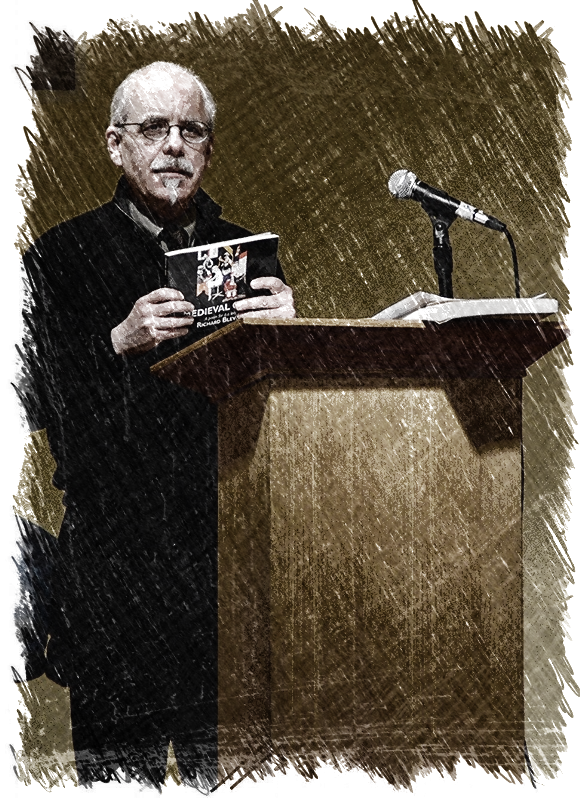
One deep congruency we arrived at, we came to right at the beginning. Love basis.
Another lesser, and vital congruency, brought forth one of the essential fundamentals able to support our mindful and creative travels: as it happens, an exquisitely sensitive humane esotericist breaks bread with a mercurial edge-seeking flatlander because the whole cause of inverting assumptions and sometimes having to mulch them is shared and equally served by two radically different sensibilities–except for, as Rumi noted, our “fleshy hearts.”
We traveled and never went anywhere. We made a road trip to the Target in North Olmsted for the sake of a veteran who had just rented a crib in Lakewood but didn’t have a bed.
We made a bunch of trips to Wadsworth in support of our fellow traveler, Daniel and his public library.
“Ken, would you please try to keep at least one hand on the wheel?”
When I had reason to remind Ken that I am, by disposition, a “deep ironicist,” he told me this assertion perplexed him. I told him,
“Come on Ken, you’re the one who titled me, Dr. Puck.”
Then, I explained to him what imperatives are driven by chops, negative capability, good/bad fortune, large collections of devices and heuristics, multitudes of perspectives, plus the ability to rappel down to the “meta,” and, I went on,
“then there are also all those just-in-time intuitions blowing into your scheme like neutrinos stream through the material world, except you and me grab at ’em and we bring the intuition back alive, from wherever was its ‘wild,’ and you stick ’em to your wall, They always seem to stick.”
“Yeah, Ken, your sort of an ironicist too.”
IX.
From the perspective of my own vulnerability and woundedness, my friendship with Ken served my adult healing process. It is exactingly fit to the description: my being profoundly recognized and known. How would Ken describe the ramification of our friendship from the point of view given by his own core narcissistic needs? Although I knew Ken and knew him well, the only aspect I’m able to certify is that he benefitted from my not ever personally criticizing him. Our relationship was much more confessional in the direction of me explaining my personal stuff to him.
The currents of personal exchange, predicated by our sincere and daring submission to the beingness of vulnerability and openness seem to me to provide the foundation for what our relationship mainly was concerned with: wide-ranging inquiry and intuitive exploration. He thought we were doing shamanic collaboration, whereas I thought–from my flatland viewpoint–that we were experientially joined for the purpose of co-creating actual impressions out of contingencies. You can see his esoteric view doesn’t require any penetrating conceptualization because the foreordained is the ultimate ‘just so.’
The time requirement is, paradoxically, the essential requisite for the invocation of co-creative spontaneous learning of the sort able to escape time. Cutting hunches often seems to arrive from outer inner space. Each seems to be the result non-linear processes, and each is of unknowable origin. Ken and I didn’t spend anytime at all aligning our vastly different personal cultures even as we granted the fundamental distinction between the foreordination of the vertical worlds and the contingencies of the life worlds. Yet both higher/lower and life worlds are esoterically dimensioned.
We casually termed this last year, synchronic learning. The regular definition, Synchronic: concerned with events existing in a limited time period and ignoring historical antecedents, doesn’t suppose the same stuff Ken and I were supposing, because we supposed something closer to synchronistic learning.
(Ken’s repurposed my social cybernetic domains and set these to a schema. In turn his schema draws on The Master and his Emissary: The Divided Brain and the Fabrication of the Western World, by Iain McGilchrist.)
This schema figured into our co-creation of The Heaven and Hell Archetypal Evaluation.
I never had to remind Ken that I was developmentally underdetermined. On the other hand, every now and then he would remind me that he wasn’t overdetermined, (or fixed in his beliefs.)
Just so you know I am not pushing belief in any constellation, cluster of interests, causal narrative, etc. – The booty once stored on my Nina, Pinta and Santa Maria has been emptied of all but the monkey. Like I suggested months ago in my basic neo-Taoist twinkie feast (see Chi A Neo-Taoist Approach to Life by R.G.H. Siu) we circumambulate the light downloaded into chi processed in the living organism evolving into the higher chi order of human twinkie canisters spinning off virtual presences, energy forms, phantoms into which human belief is hooked. Conspiracy theorists etc. drop anchor or go postal in this great cultic transfer site where abides superego/gregores. What I love abt. El Cristo Rey (a royal god image) and the Peasant brigade vid, so palpable you can taste mezcal’s worm turing in the soul’s secret sharer.
In the threads generally or tweets, it seems, we are in a state of madly accelerated contra-naturum Ahrimanic phantom-making. Each tweet a virtual presence of misplaced, poorly harvested, badly circulated human chi. No real grip on the real, the empty (the foreordained out and back), the nameless, the name of the actor, the causal. No bead on the effect and the compounding. Out of Tao. All affects with everyman aglow on a brain ripped on causal phantom of himself – certitude the superego defense of the ass-kicked ego. (Recall the civic phantom scarier than the PD in the LO Hyper-local dojo OP). The virtual is all the virtuous and vice-drenched representative phantoms launched from human twinkies and fed by uncooked and undercooked baked goods over time, now mechanically accelerated in the digital age.
I am an afficiando of culture wars. I’ve been hip to Martin for a long time, because I love to read traditional Roman Catholic sites. Another wizard of Oz, a psy-operator in the virtual machinery that breeds phantons and hijacks chi for the entropic grinder/apocalyptic binder. Again the question I have is the gatekeepers, how effective or lax, what slips through, what gets blocked. Again, one never know for sure. But one does know however inept, or subject to variance, breakdown, or fake-out, the gate-keeping and framing of influence, redaction, propaganda, etc, in support of the phantoms that juice power – imagined and authorized by law or voices or angels what have you – is an human actual operation. (KW Aug-29,2014)
During the period last year, that ended up with the liberation of psychoastrology and the development of the Cube-O-Probe, we rolled through and over the historical variety of explanatory regimes underlying the asymmetric/yang traditions of normative, top-down, astrology. Then he took the Cube-O-Probe cubes and beta tested them with astrologers and friends and nieces.
In our work as partners, IN4tuity, in the library space, our entwined esotericism was background to our coming back into the ‘timefullness’ of psychodynamic evaluation, abductive analysis, and sensemaking. Yet the implicit ‘fourth’ blade (in our chop shop) remained: (now timely or timed,) intuition.
Dr. P:
Emotion and Intuition and Feeling seem to be crucial domain that we are working in a course correction to stamped-out, dried out metrics and objectifications and their “environmental impacts” on the life-flow, human experiences and vital organs in the library – sensitizing director, staff, board to the human asset and helping them to align together as caring stewards of the ethos.
Might you be able to normalize any of this material that points to my deeper sources:
Here’s a response I wote some time ago to John Giannini in response to an early draft of a book on intuition he was writing:
John:
In providing a reading, one always tries to pull the writing in one’s one own cognitive direction. I hope this provides more insight than confusion.
1 Basic Assumption/Primary Paradigm/Intentionality of the Function
Drop a few tight propositions about Intuition to claim your primary paradigm for the book.
I think the reader’s understanding would be better served if you nail a few more choice statements of your own about Intuition that will then ramify through the statements of Maslow and, Pagels and Kafka.
What I am suggesting are a few choice formulations/hypotheses with hooks on Intuition. These provocations will hook not only into the Maslow and Pagels and Kafka statements but also press thematically into the material that you will later supply.
In other words, present the provocative scaffolding that will open a strategic position for your own authorship in advance of your citation of others. In short, put your convictions about Intuition before your connections to Intuition.
I’ll toss a few examples from my notebooks that may not be tested or true statements about intuition but I offer them here, simply to convey a broad sense of tactic (not necessarily the language or terms) to be used in your intro:
Intuition is the intentionality of the not yet known; it redounds from the flux of things into symbolic experience to make the flow of information from the unconscious more intelligible to the ego.
Intuition is the divisible faculty that persists through the process and premise of indivisibility.
Intuition is an open and indefinite unity (Maurice Merleau-Ponty’s ontological dimension), an original drawdown from an inexhaustible reservoir that supports improvisation and novelty.
Intuition is the surplus presence of life moving in patterns of meaning that cannot be touched directly.
Intuition offers a momentary return to self-organizing experience at a preverbal, existential level.
Intuition is the darkness where the gods dwell; it is the force of the religious complex; it is the numinous meaning schema of the divine.
Intuition is the ground of complex and heightened experience; it reveals through a flash of interacting activities a personal connection to a place of novelty (Whitehead’s process philosophy?) in the cosmic order.
Intuition generates personal convictions about anomalous, other-worldly, supersensible and uncanny realms.
2 Divine and Saphire
A small amplification and definition of “the divine” as a meaning schema in your theological model seems needed. As the intro stands now, you drop the term “divine” onto Sapphire’s “intuitive unconscious process.” It seems sudden and exaggerated to such a loaded term so suddenly with any set-up.
Parsing the meaning schema in your theological and psychological registers would bring a tighter measure of clarity.
Is intuition the divine affect that moves one to a felt sense of presence that unwinds from the object/information flow of universe to shock one’s previous verbalization/narrative of one’s life and to encourage the perception of an alternative intentionality?
3 Asymmetrical and the Symmetrical
My initial reading suggests that you might ponder a little further how the asymmetrical (Yang?) and the symmetrical (Yin?) aspects might be featured in your model.
Does the Intuition “emerge” from the complex interaction between the asymmetrical (Yang?) and the symmetrical (Yin?) archetypal impulses that contain in it any aspects might be featured in your model.
I read your move in Compass of the Soul to the Coupling of types as a symmetrical move.
Is your Coupling move a Yin feminizing qualification of the Yang asymmetrical emphasis of Cambry? If so you might be able to mark your intention in the context of the Tao.
Intuition is the energy that binds/returns the asymmetrical leading edge of experience to the symmetrical circumference.
Ken
Our partnership joined Ken’s left hand with my right hand, just as it negotiated insight from the time-bound beforehand asymmetry to the instantaneous psycho-transmogrification posed by the synchronic emergence of symmetry.
Intention: what now without my friend Ken? Cube-O-Probe cuts through and then there is the WATER ELEMENT turned upside down!
CODA
I have been reflectingintuiting over the past six weeks on my relationship with Ken Warren, and, the nature of active creative sustained depth-full relationship. This has been, is, almost a prototype of grief framed by bittersweet finality. This is both a ‘hard’ thing and a very good thing.
As I grapple with a phenomenology of deep relationship, very little of what I have been shaping over the last few weeks is inflected by interactions brought up and out from an ongoing relationship. I have been focusing on the unique qualities of my relationship with Ken. The implicit irony given by conceptualizing without solidarity is not lost on me at all.
This schema depicts one view of generalizations oriented to a foundational perspective. In turn, it is taken from the most basic interpenetrating levels, levels identified and discussed by Ken and myself. This schema represents the hand of deep relationship oriented to co-creative exploration, taken from the unique fingerprint of our relationship. Every deep relationship expresses a unique fingerprint.
In my view, the hallmark of deep exploratory relationship is that it is relationship founded by the transformation of instrumental relations into core depth orientation and action. Deep relationship is noetic.
Deep relationship is ironic in several crucial senses. First, such relationships demand what I term ‘open time’ orientation for the sake of turning away utility, and turning toward exploration. This further means that deep exploratory relationships are not mainly normatively useful. Secondly, exploration itself requires ‘heuristical’ flex within the open time modality; and this is instigative of the negotiation and transit and transfer of meanings, and the recursive chatter which soon enough finds any granted perspective to be ‘ironic’ in the given relation to some other perspective.
Ken and I cycled through this second aspect precisely in the way that the, his, foreordained could encompass both traditionalism and naturalism whereas, my notional contingency would encompass both fortuity and emergent spontaneity. We discovered early on that the spirited verticality is entangled ironically with soulful horizontality. This crossing, so-to-speak, constituted the background frame to our wandering, experimentation, and exploration.
Third, the introduction of a profound ludic element to the core orientation is clearly ironically situated in the way playing around pulls time out of its linear contour, and, amplifies the timelessness of the first order intrinsic motive; which is to assert here how play is motivated by virtue of play being enjoyable for its own sake. This is a baroque way of describing the experience of combinatorial flow in our relationship.
“Wow, I can’t believe we’ve been hanging out for four hours!”
Deep Relational Matrix per Warren/Calhoun
(email me if you want the Warren-Calhoun Matrix in pdf)
In my idiosyncratic and syncretic phenomenology of profound friendship, essential qualities of deep relationship are placed in the order of this matrix. The matrix proposes that such relationships possess qualities and dispositions of these types. Those qualities and dispositions in the flux of relationship are dynamic, whereas the apparent square form of the matrix is stable.
Typology given by the functional primes: A(nalytical) | E(xperiential) | I(ntoxicating) | C(ombinatorial)
In noting this, a relationship may be broadly typified. For example, Ken and my relationship was in the main Combinatorial, and its type in order was much of the time, C(IEA) The subdominant quality is an inferior quality, so our Combinatorial relationship could be very impractical. Although I have yet to conceptualize the dialectical primes and secondary polarities given in the matrix, it seems readily apparent that the basic oppositions are given in the pairings, C<>A, and E<>I.
Additionally, right now the rough appearance suggests the typology of the Analytical Psychology T/F, N/S, unequivocally associates with the relational primes:
COMBINATORIAL <> INTUITION
INTOXICATING <> SENSATION
EXPERIENTIAL <>FEELING
ANALYTICAL <> THINKING
Alas, all this is worked out without my favorite colleague and friend and co-explorer’s contemporary contribution. Our inquiry had begun to stir into these elements the liberated psychoastrology and the experiential learning theory of my colleague David A. Kolb.
Still, Ken was very jazzed by our recent inquiries coordinated by our mutual sense that some of the deep noetic structures of organizations, such as public libraries or suburbs, were literally secreted in the profound dyadic relationships of persons in those kinds of communities.
(My considerations here are surely novel in their relation to what is a very small normative literature about depth-in-relationships–found within the scholarship about management.)
One way to work with these ideas is to imagine a controller for your close relationships and then conjure how you sometimes manipulate its regulatory dials.
Let me know what you discovered in playing around with the dials!
The Matrix itself could be larger, and more robust. Because our own relationship comprised our principle laboratory, in our collaborative deconstruction of my promethean puer, and of Ken’s anima problem, over the last year or so, we discovered a lot of shadowy elementals, darkened aspects, impersonal inversions, and hidden unconscious facts. Ken termed these occulted aspects. Those aspects obviously figure into, and would augment, the organization of the fuller set of generalizations of the qualities and dispositions of deep relationship.
X.
A young man decided to move his family, his wife and two daughters, to a set of small rooms in a building in Isfahan. His family’s new home was located a short walk away from the Sufi school the young man wished to join.
The man had just finished his regular studies and now hoped to support his spiritual aspirations. A small dowry and his wife’s support were his only practical foundation. Yet, the young man did not decide to move until he had received a letter of assurance from the school, stating it could modestly employ him.
With this letter in hand, and his family moved in, the young man walked to the school, stepped into the stone doorway, and gently knocked. After a moment, the door opened to reveal a very old man. The old man held the door half way open.
“I have come from the district of Lake Urmia to apply to your school. I have this letter in support of a small stipend.”
The old man didn’t budge, and told him, “We’ve been expecting you. The Pir has requested I grant you a job only in the light of following these instructions.”
“I am humbled.” responded the young man.
The old man stepped into the archway and closed the door behind him. Standing face to face with the young man, he reached into his robe and pulled out a leather bound book.
“Your job is simple: come to the school every day at 11am and sweep the doorway and then sit here, the man pointed to a bench cut out of the archway’s support, and greet visitors. If the visitor is holding a book like the one I am about to loan to you, summon me with four knocks and admit them into the inner hallway. After prayers, come back and go around to the rear of the building and sweep the entrance to the rear doorway. There is a bench there too.”
The man held the book in front of him with both hands.
“Nobody enters the school through the rear door. People leave the school through the read door. When you are doing your job there, the extra courtesy is necessary as someone departs the school through the rear door, ‘God be thanked.’ At 1 in the afternoon, come back to the front, sweep the exterior entryway, and, spend the remainder of the hour sitting here on the bench and helping visitors.
Extending the book so that the young man could grasp it, the young man slowly brought the book into his possession.
“The book you have now is blank. On its pages you are to write your reason for hoping to join our school.”
Clutching the book, the young man bowed and lifting his head, told the old man,
“I will review my reasons and summon the single most excellent one and inscribe it on the first page of the book.”
The old man bowed, “I will see you tomorrow at 11 in the morning.”
The young man waited until the old man had gone back into the building and shut the door. He heard the snap of the latch, and turned and walked to his new home.
The next day, the young man began his new job, and, he also hoped, he had begun to transit a short term before his being admitted into the school. On his first day he admitted two young men. Nobody left through the back door. He went home at 2pm.
On the second day, he admitted no one, and no one left, but, at the very end of the day, the old man from whom he received the book, stepped out onto the front entryway just as the young man stood up from bench to go home.
After greeting the young man, the elder asked, “Have you entertained and inscribed your reasons for joining us?”
Thrilling to hear the question, the young man lifted his book and gently opened it to the first page, turned it around, and with a graceful thrust, supported it while showing the page to the old man.
The old man looked down, read what the young man had penned, looked up, and told the man,
“I am not the judge of reasons. Nevertheless, I know that there are more reasons than this single one. Please write down all the reasons and do not omit a single one.”
The young man heard this beseeching request and bowed, turned the book back around, and closed it and lowered it. Again, waiting until he heard the snap of the latch, he left and walked back home.
So it was began a long sequence of days. Every now and then he would admit a young man through the front door, and, much less frequently, he would greet a departing elderly man as he left the building through the rear doorway.
Late every evening, the young man would contemplate his reasons, and enter new ones into pages in the succession of pages of the book.
Every day, at the end of his work day, the old man would read the new entries and return the book to the young man, and always remark,
“Surely, you know of more reasons?”
At first, that there were more reasons surprised the young man. Soon enough, the young man came to both reason or conjure new reasons effortlessly. He’d go to the school, do his job, let a few men in and honor the fewer old men departing, and, he’d end each day with his presentation and the old man’s, by now, ritual injunction.
The young man’s efforts to discover his additional reasons became more difficult as time wore on. Along with this, for the first time, that other young man were entering the school, and that each entrant carried their own book, began to test the young man’s resolve.
He persevered even as his nightly contemplations became woven with doubts. His biggest doubt was this: ‘where in this book full of reasons is the one reason?’
He wrote this down in the book. He followed it with a passage,
‘I have no more reasons. There are no more reasons.’
The next day, the fortieth since the young man had arrived for the first time at the front door of the school, the young man opened the front door for two young men, and, he honored a single very elderly old man departing from the rear door.
At the end of the day, the old man stepped out into the entryway and extended his hand with the palms faced upwards to receive the young man’s book. The young man set the open book on the old man’s palms. The old man lowered his head and read the three most recent passages.
Raising his head slowly, the old man waited for the young man to raise his eyes to meet his own. The old man’s palms, now empty. remained turn heavenward.
“Young man, would you please follow me?”
He opened the door. The young man, in a state of shock, stepped through the front doorway. Both men were in a small hallway. The old man opened the inner door. He swung the door to his chest and softly told the young man,
“On the other side of this door is a library. You will not have to search for the single half filled shelf. Please place your book on that shelf. Next, proceed to go through door at the very rear of the library.”
The young man calmed himself, took a deep breath, silently thanked God, and stepped through the inner doorway. He came into an immense illuminated room. To his left and right stood from floor to ceiling many tiered book shelves filled with books. The books were bound the same as his own book was bound. The young man slowly walked down the single aisle that ran between the library’s left and right book collections.
He walked almost to the end of the room and its shelves of books before he spotted on his right a low shelf. The shelf was partially filled with books, and below it was, apparently, the last empty shelf in the entire, immense library. He placed his book on the shelf. He turned in a complete circle to take in the entire library. Then he turned toward the second door, opposite the door he had come in through at the other end of the long aisle.
He walked up to the door, placed his right hand on the knob and turned it, opening the door. He stepped through the door and discovered he was standing in the rear doorway he knew so well. A young man reached out and gently held his right elbow.
“God be thanked.” The young man dropped his head, let his hand down, and bowed. He then sat down on the bench.
“There is only God to be thanked.” He told the seated young man. With that, the man walked back around the building toward the street. As he turned down the street to go home, he mused to himself, ‘This has been a day like no other.’
When he got to his house, he suddenly felt elated. Turning the door knob, he swing the door open. A very young girl he did not know greeted him,
“Grandpa!”

